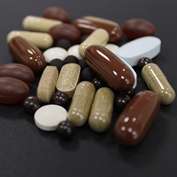Tests find traditional medicines contain pharmaceuticals, heavy metals and endangered animals

A collaborative study has found high rates of adulteration, substitution and mislabelling of traditional Chinese medicines (TCM), with the undeclared ingredients rendering many of the tested samples either illegal or potentially hazardous to consumers.
Researchers from Curtin, Murdoch University and the University of Adelaide employed a three-pronged method involving highly sensitive DNA sequencing, toxicology and heavy metal testing which, when combined, allowed them to assess the true composition of the TCMs. The findings have just been published in the journal Nature Scientific Reports.
Lead researcher Professor Michael Bunce, of Curtin University said a combination of cutting edge techniques used together for the first time revealed 92 per cent of the TCM products tested had some form of adulteration or substitution.
"Adulterants discovered in the 26 products tested included toxic metals such as arsenic, cadmium and lead; medications such as paracetamol, antihistamines, anti-inflammatories and antibiotics, and stimulants such as pseudo ephedrine. Of particular concern were heavily regulated drugs such as warfarin and sildenafil (Viagra)," Professor Bunce said.
Toxicological analysis of the 26 TCMs using mass spectrometry at Murdoch University, carried out by Dr Garth Maker and PhD student Elly Crighton, along with Associate Professor Robert Trengove of the Separation Science and Metabolomics Laboratory revealed that 13 contained at least one undeclared compound, with one sample containing six potential adulterants.
"Perhaps the most worrying result was detecting the potential poisons strychnine and brucine in high amounts in one TCM," Dr Maker said.
Professor Bunce said half of the medicines tested contained at least one undeclared compound, while half contained plant or animal species that were not listed as ingredients on the product packaging.
"The most concerning animal ingredient found in this batch of TCM was that of the endangered species, the snow leopard," Curtin researcher Dr Megan Coghlan said.
Dr Coghlan, whose PhD involved teasing DNA out of these TCMs, said the result demonstrated that despite heavy penalties for illegal trafficking of protected wildlife, poaching and smuggling was still occurring – with traditional medicine a significant 'push factor'.
"Moreover, consumers of this particular medicine would be unaware that they have been ingesting content from this species, as it was not listed as an ingredient," Dr Coghlan said.
Other species detected in the Adelaide-purchased TCMs that were tested included pit viper, frog, rat, cat and dog, although it was not clear if some of these species were intended ingredients or the result of poor manufacturing practices.
Professor Bunce said each herbal medicine sold in Australia is required to be listed with the Therapeutic Goods Administration (TGA), but only 12 of the products tested were listed with this agency.
Heavy metal testing carried out at Curtin University detected arsenic, cadmium and lead in some of the TCMs, with one medicine containing arsenic at greater than 10 times the daily limit recommended by the TGA.
Dr Ian Musgrave, a toxicologist from the University of Adelaide who interpreted the health risks along with Dr Ian Mullaney from Murdoch University, said the combination of multiple undeclared compounds/adulterants in a single preparation was cause for great concern, as it was almost impossible to predict how they may interact with each other or with other prescription medications.
Professor Bunce said the study raised the question of whether TCMs and other herbal medicines were undergoing enough regulation before becoming available to the public.
"For the first time we have a set of tools that will enable regulatory agencies to better evaluate safety of complementary medicines, and assist authorities to prosecute cases of illegal substitution or adulteration," Professor Bunce said.
"We should be doing more in Australia, and globally, to ensure consumers are not being misled by the efficacy and safety claims of these 'natural' products'."
Professor Bunce said the findings reemphasised the importance of patients accurately declaring to health professionals any complementary medicine being consumed.
In an ongoing project funded by the National Health and Medical Research Council (NHMRC) the research team is investigating an additional 300 widely available herbal products.
The full paper, Combined DNA, toxicological and heavy metal analyses provides an auditing toolkit to improve pharmacovigilance of traditional Chinese medicine (TCM) can be found here.
















